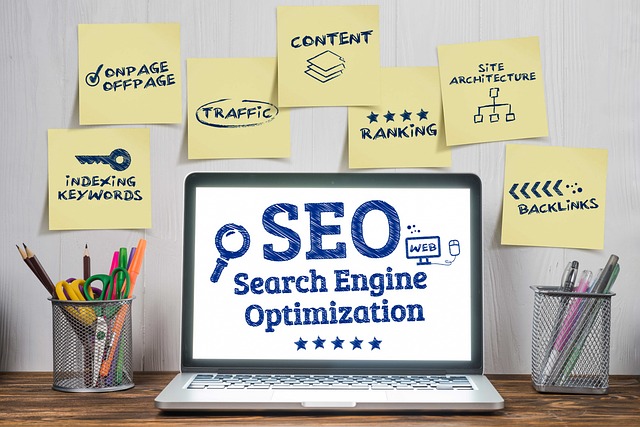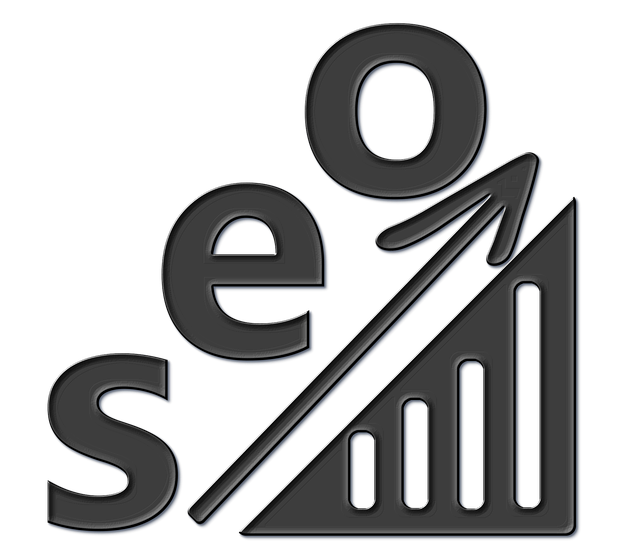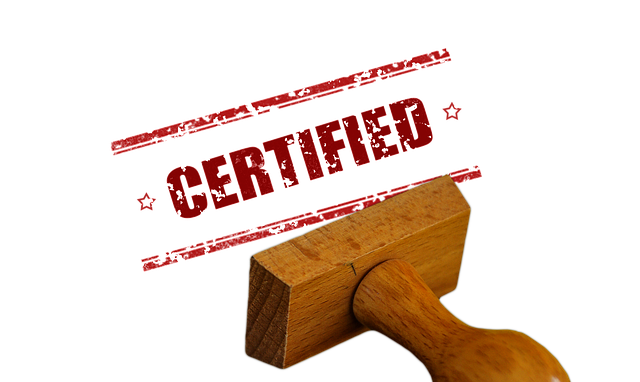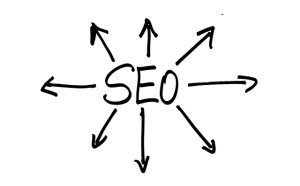The SEO Certification Program is a vital tool for businesses aiming to thrive in the digital era. It equips individuals with skills to optimize websites, enhancing search engine rankings and driving organic traffic. The program covers keyword research, technical SEO, content strategy, user experience (UX), image optimization, and analytics. By mastering these aspects, certified professionals create high-quality, optimized web pages, improving site visibility, reducing bounce rates, and boosting conversions. This certification opens career doors, making practitioners valuable assets to marketing teams and highly sought-after in the dynamic field of digital marketing.
“Unleash your digital marketing potential with an in-depth look at On-Page SEO Certification. In today’s competitive online landscape, a certified SEO professional is indispensable. This comprehensive guide explores the essence of on-page optimization, highlighting its role as the foundation for digital visibility. From mastering keyword research to HTML markup and user experience design, we delve into key components of an essential SEO certification program. Discover how structured data, analytics, and optimized content creation can propel your online presence.”
Understanding On-Page SEO: The Foundation of Digital Visibility

On-Page SEO is a fundamental aspect of any successful digital marketing strategy, and it forms the core of many SEO Certification Programs. It refers to the practice of optimizing individual web pages to rank higher in search engine results pages (SERPs). By focusing on elements within your website’s control, such as content, meta tags, header tags, and internal linking, you can significantly impact a page’s visibility and attract more organic traffic.
An SEO Certification Program equips individuals with the knowledge and skills to master on-page optimization techniques. These programs delve into best practices for keyword research and implementation, ensuring that web pages are created with relevant keywords strategically placed in content, titles, and meta descriptions. By understanding how search engines crawl and index websites, participants learn to create high-quality, user-friendly content that keeps visitors engaged and reduces bounce rates, ultimately strengthening a site’s online presence.
Why an SEO Certification Program is Essential for Your Career

In today’s digital landscape, a robust online presence is non-negotiable for businesses aiming to thrive. This is where an SEO Certification Program steps in as a game-changer. It equips individuals with the knowledge and skills required to optimize websites for search engines, thereby increasing visibility and driving organic traffic. With the constant evolution of algorithms and search engine trends, staying ahead requires specialized training. An SEO certification demonstrates your proficiency in implementing effective strategies that align with these changes, making you an invaluable asset to any marketing team.
Moreover, this certification opens doors to a wide range of career opportunities within the digital marketing realm. It showcases your commitment to professional growth and keeps you relevant in a fast-paced industry. Employers value certified professionals as they can confidently rely on their expertise to enhance search rankings, improve user experience, and ultimately, boost conversions.
Key Components of a Comprehensive On-Page SEO Training Course

A comprehensive On-Page SEO Training Course should cover several key components, each vital for mastering the art of optimizing web pages for search engines. Firstly, students must learn the fundamentals of keyword research, a cornerstone of effective SEO strategies. This involves understanding user intent, identifying relevant keywords, and analyzing competition to create a robust content strategy that attracts organic traffic.
Additionally, the course should delve into technical SEO aspects, such as site architecture, URL structure, meta tags, and schema markup. These elements are essential for ensuring search engines can crawl and index web pages efficiently. Learning how to optimize page speed, mobile-friendliness, and site security is also crucial, as these factors significantly impact user experience and search engine rankings.
Optimizing Title Tags and Meta Descriptions: Art and Science

Optimizing Title Tags and Meta Descriptions is a delicate balance between art and science in any SEO Certification Program. The title tag, a crucial on-page element, acts as a snapshot of your web page’s content, while the meta description provides a brief overview to search engines and users scrolling through results. Crafting these elements requires a deep understanding of both keyword research and user intent.
Successful optimization involves strategically integrating target keywords while maintaining readability and relevance. A well-crafted title tag should accurately represent the page’s content, enticing users to click. Similarly, a compelling meta description can significantly improve click-through rates (CTRs), as it provides a concise overview that aligns with what visitors are searching for.
Mastering Keyword Research Strategies for Effective Content Creation

In the realm of digital marketing, a key component of successful content creation is understanding and implementing effective keyword research strategies. This is where an SEO Certification Program proves invaluable. By mastering keyword research techniques, content creators can identify relevant terms and phrases that align with their target audience’s search queries. This involves delving into tools like Google Keyword Planner, SEMrush, or Ahrefs to uncover search volume, competition levels, and user intent behind specific keywords.
With a solid foundation in keyword research, professionals can craft content that is not only optimized for search engines but also resonates with their intended audience. This strategic approach ensures that each piece of content is tailored to address the information needs of potential customers, driving better engagement and conversions. Ultimately, mastering these strategies forms a crucial part of any SEO Certification Program, enabling practitioners to create compelling content that ranks higher and attracts more relevant traffic.
HTML and Schema Markup: Unlocking Structured Data Potential

In an SEO Certification Program, understanding HTML and Schema Markup is paramount as they are key components in unlocking your website’s structured data potential. HTML acts as the backbone of every webpage, providing a structured framework that search engines use to interpret content. By leveraging Schema Markup, developers can enrich this framework, offering search engines detailed insights into the page’s content, context, and meaning.
Schema Markup, essentially a set of predefined tags, allows webmasters to communicate with search engines in a language they understand. This enables enhanced search results through rich snippets, improving click-through rates and user engagement. For instance, schema markup can highlight reviews, events, or product details, making your website’s content more appealing and valuable to both users and search algorithms.
Enhancing User Experience: The Role of Site Structure and Navigation

In an On-Page SEO Certification Program, understanding the intricacies of enhancing user experience is paramount. A well-structured site with intuitive navigation serves as the foundation for keeping visitors engaged and reducing bounce rates. When users can effortlessly find relevant content, their satisfaction levels increase, leading to longer sessions on your website.
Effective site structure involves creating a logical hierarchy through organized categories and subcategories. This simplifies navigation, enabling users and search engines alike to traverse the site with ease. A clean, uncluttered design further contributes to improved UX, ensuring that essential elements like call-to-action buttons are readily visible. By prioritizing user experience, your website becomes more appealing, fostering a positive impression in line with SEO best practices.
Image Optimization Techniques to Boost Search Engine Rankings

In the realm of an SEO Certification Program, understanding image optimization techniques is paramount for boosting search engine rankings. This involves more than just choosing the right file format; it includes optimizing image file sizes to improve load times, a factor that both Google and users value. Tools like compressing software or utilizing modern formats like WebP can significantly reduce file sizes without compromising visual quality, ensuring fast-loading pages that enhance user experience.
Additionally, incorporating relevant alt text for each image is essential. Search engines rely on this text to understand the content of images, making it crucial for accessibility and SEO. Crafting descriptive alt tags not only helps search engines index your images but also improves the overall accessibility of your website for users with visual impairments.
Measuring Success: Analytics Tools for Evaluating On-Page SEO Performance

Measuring success is a vital component of any SEO Certification Program. To assess the performance and effectiveness of on-page optimization strategies, professionals must utilize analytics tools that provide valuable insights into website behavior and user engagement. Google Analytics stands out as an indispensable resource, offering detailed metrics on traffic sources, page views, bounce rates, and average session durations. By analyzing these data points, SEO specialists can identify high-performing content and areas needing improvement.
Advanced tools like Google Search Console further enhance the evaluation process by providing direct insights into how search engines crawl and index webpages. This includes information about indexed pages, crawl errors, and keywords driving organic traffic. Integrating such analytics tools into daily operations ensures that optimizations are data-driven and aligned with user expectations, ultimately contributing to improved search engine rankings and enhanced online visibility.
